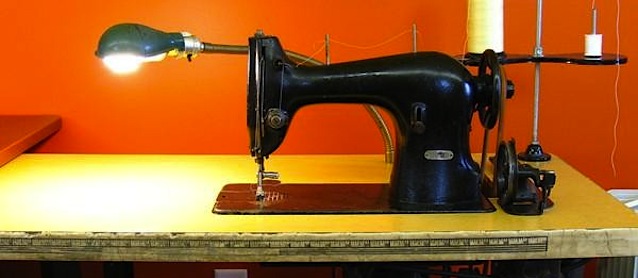Sewing & Craft Alliance recently published a short, two-page guide on how to set up your sewing room so that you don’t hurt or stress your back while working. The guide is geared more towards the seamstress than the auto trimmer, but the basic rules of sewing ergonomics remain the same. It’s definitely worth a read.
Among the tips featured in the guide:
A good chair is a must, and there is no one chair that fits all bodies. Personal preference and the size of your body will determine whether a particular chair will work for you.
First, sit all the way back in the chair with your back against the chair back. Do not sit on the edge of the seat. Sitting improperly can cause a myriad health problems ranging from poor leg circulation to upper back, neck, shoulder and hand pain. […]
When sitting, your knees should be slightly lower than your hips. Your seat and hips should be fully “in” the chair with your back against the back of the chair. Position your legs out in front of you at a comfortable angle with your feet touching the floor. If your sewing table height is not adjustable and the chair is, you may need to raise the chair to fit the table and put a footrest under the chair to support your legs.
The guide goes on to instruct sewing machine operators on how to pick a proper sewing seat, as well as the correct heights to set up sewing and cutting tables. Some of this may seem like common sense, but it’s often the little things that we don’t think about that can affect our posture and cause aches and pains.
For the full guide, see: Sewing Room Setup for Healthy Sewing

Bobbin left the following comment on another upholstery orum, but I’m posting it below because it very well said:
“I learned a tremendous amount about setting up a comfortable workspace when I worked in a garment factory. Working 8 hrs. a day in behind a machine is pure torture if the bench and the chair are improperly adjusted. It’s tiring to have to lift your arms to the height of the machine if the chair is too low (and can’t be raised) and it’s equally tiring to have to lean over the machine because the bench is too low and the chair too high.
It all sounds very simple, but correcting such oversights is often relegated to the bottom of the “to do” list because many of us don’t sit behind the machine for hours on end… we sew a little, get up and move around, and then we’re back to sewing. But properly adjusted equipment really does make the sewing part a lot easier.”